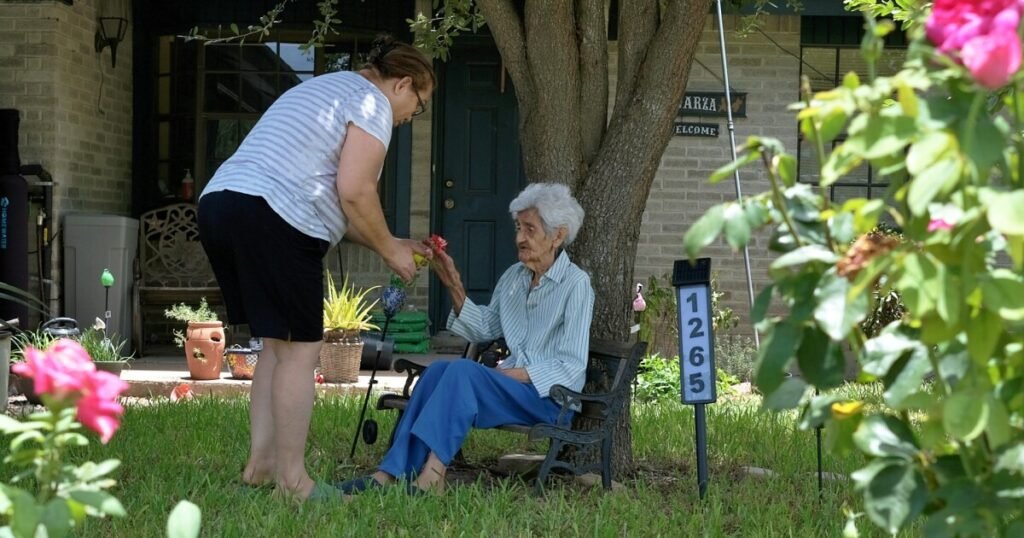Addressing Alzheimer’s Crisis in Texas: The Fight for Support and Research
A Rising Epidemic
The Alzheimer’s disease epidemic is sweeping through Texas, particularly affecting vulnerable regions like the Rio Grande Valley. Alzheimer’s, the most common form of dementia, impacts one in nine Americans aged 65 and older, leading to significant cognitive decline and emotional distress. As the disease progresses, it burdens not only patients but also their caregivers — an estimated 460,000 individuals in Texas are afflicted by Alzheimer’s, with over 1.1 million caregivers likely experiencing burnout and financial strain.
Legislative Challenges
On a chilly February morning, Gladys Maestre, the director of the Alzheimer’s Disease Resource Center for Minority Aging Research at the University of Texas Rio Grande Valley, stood before Texas lawmakers advocating for increased funding and support for Alzheimer’s research and care. This mission was urgent for the Rio Grande Valley, a medically underserved area marked by a staggering Alzheimer’s incidence: one in four seniors in Starr County are affected.
Despite a substantial $33 billion budget surplus, Texas allocated a mere $5.5 million for dementia care in recent years, starkly contrasted with states such as Florida, which spends $80 million, and New York, which invests $33 million, on similar initiatives. The lack of funding in Texas has left many patients unable to access vital care, with lengthy waitlists for specialists such as neurologists.
A Dire Situation in the Rio Grande Valley
In the Valley, where seniors are three times more likely to develop Alzheimer’s than the national average, access to care is severely limited. With no public hospitals and only one memory clinic serving a vast area of 4,000 square miles, many residents are left waiting up to 18 months for diagnostic appointments. The consequences are dire as families grapple with the emotional and financial impacts of caregiving while navigating an inadequate healthcare landscape.
Legislative Engagement and Hope
During a recent session at the Texas Capitol, Maestre engaged with 11 state senators and representatives from the Valley, many of whom showed genuine concern and empathy towards the Alzheimer’s crisis. Some legislators became emotional, sharing personal experiences related to dementia within their families. This engagement represented a glimmer of hope for Maestre, who left the Capitol grounds feeling optimistic despite the challenges ahead.
Budget Allocations and New Initiatives
While this session did not yield immediate funding increases for caregivers, there was movement towards creating the Dementia Prevention and Research Institute of Texas (DPRIT), aimed at directing $3 billion towards dementia research over the coming decade. This initiative, if approved by voters in the upcoming election, could significantly advance research and attract talent to Texas in the fight against Alzheimer’s.
Despite the potential for lasting change through DPRIT, experts express concern about the distribution of funds. Many fear that without specified directives to prioritize underserved areas, funding may overwhelmingly benefit larger cities, increasing disparities among rural populations, particularly in the Valley.
Systemic Issues and Health Disparities
The struggles faced by those in the Rio Grande Valley highlight deep-seated systemic issues, such as high uninsured rates and poverty that worsen access to health resources. Maestre and her team have studied community factors contributing to cognitive decline, including environmental hazards like lead contamination linked to higher dementia rates.
James Falcon, co-founder of a local clinic, emphasizes the importance of community-based interventions. Clinics like El Faro Health and Therapeutics are stepping in to address these needs by providing free memory tests and support services, demonstrating the potential impact of grassroots efforts.
The Burden on Caregivers
Caregivers continue to feel the weight of the Alzheimer’s crisis. Maria Alanis, a devoted daughter caring for her mother, reflects on the emotional toll of navigating her mother’s rapidly diminishing memory and needs. In Texas, many caregivers like Maria do not receive support from the state, often forced to juggle multiple responsibilities without adequate resources.
With existing caregiver programs under threat and insufficient state funds allocated to dementia care, community organizations struggle to keep support services alive. Workshops and classes designed to aid caregivers are increasingly rare, leaving many families without crucial assistance.
Looking Ahead: A Community in Need
Despite the roadblocks, there is a collective desire for change among Texans affected by dementia. As health initiatives and funding mechanisms like DPRIT are considered, the need for equitable distribution remains critical. Current and potential community-led efforts promise to make significant strides toward closing the care gap experienced by residents in the Rio Grande Valley.
To truly combat the Alzheimer’s epidemic, Texas must shift its focus to include comprehensive support for both patients and caregivers, ensuring that individuals have access to essential services, compassionate care, and the time necessary to heal.
For further insights into the Alzheimer’s crisis and community-led initiatives, readers can explore resources from the Alzheimer’s Association and local health organizations working tirelessly to address and advocate for those in need.


